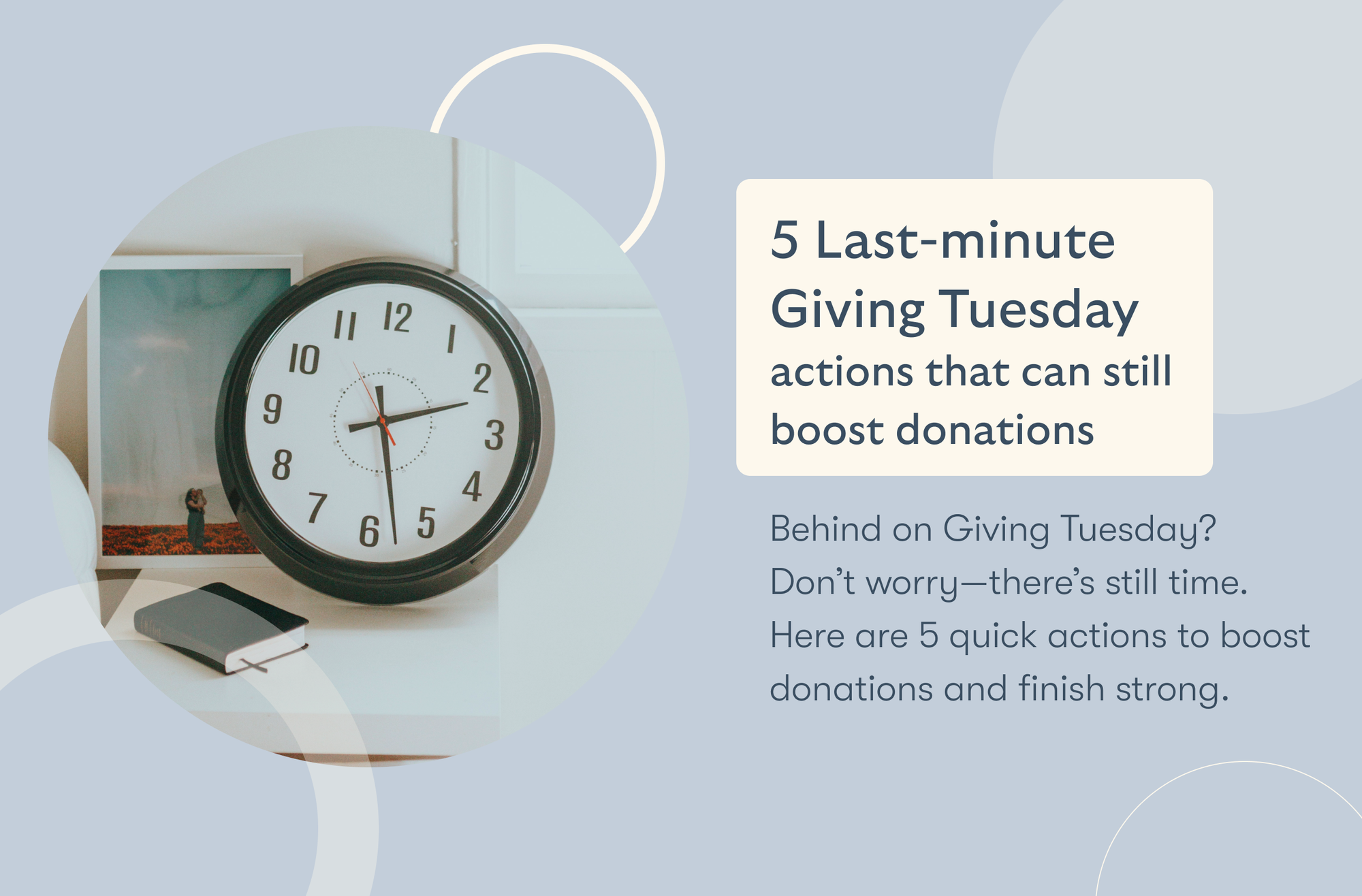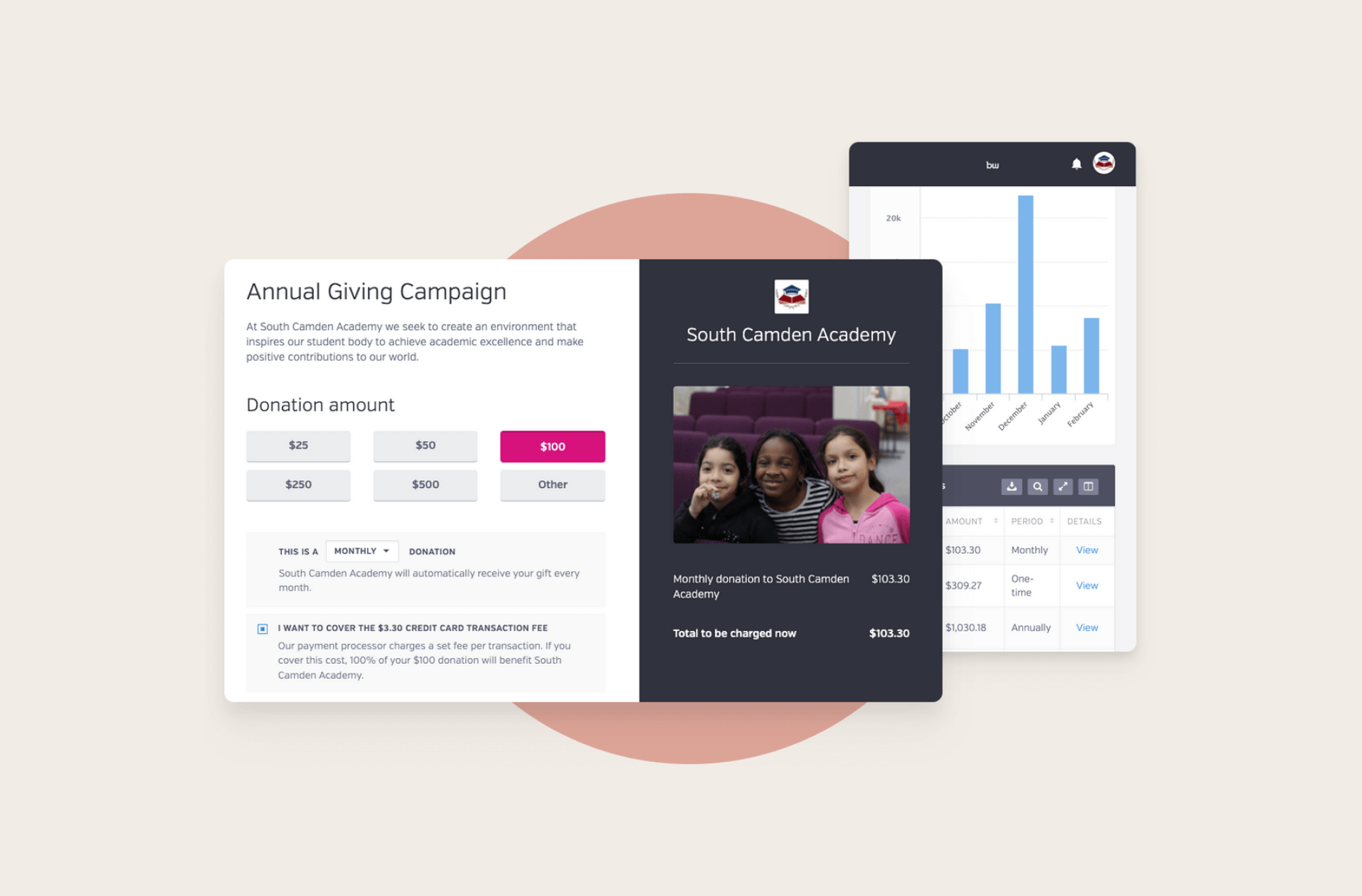Simplify donations with customizable default donation amounts
Streamline your processes and keep online and offline donations in one place
Engage with your donors with automatic updates
Give your donors the ability to donate once, monthly, or annually
What Is a Nonprofit Brand Ambassador Program?
By Whit Hunter

Nonprofits are always looking for new ways to spread their message and get more support. They use different methods to connect with people who can help them. One popular method is the Nonprofit Brand Ambassador Program, which is becoming increasingly common and important in the nonprofit world.
Today, we will discuss the ins and outs of this method. We will also show how the Nonprofit Brand Ambassador Program helps nonprofits reach their goals and make a bigger impact.
Definition of Nonprofit Brand Ambassador Program
A nonprofit brand ambassador program is a way for organizations to increase awareness and support for their causes through dedicated supporters. These ambassadors represent the nonprofit, showing its values and mission, and they help to spread the word about the organization's work to a broader audience.
They also act as the face of the nonprofit, sharing their positive experiences and encouraging others to support the cause. Brand ambassadors can be a mix of donors, volunteers, and even local influencers who are passionate about the nonprofit's mission.
Their goal is to increase the organization's visibility and credibility, which can lead to more support and funding.
Roles and Responsibilities of a Brand Ambassador in the Nonprofit Context
The key roles and responsibilities of nonprofit brand ambassadors include:
Promotion
Ambassadors actively promote the nonprofit’s events, campaigns, and news through various channels like social media, personal networks, and community gatherings.
They use their platforms to raise the nonprofit's voice and reach a wider audience.
Engagement
They engage with the community, participating in and organizing events that help to increase the nonprofit's profile. This could involve speaking at events, volunteering for activities, or hosting fundraising drives.
Fundraising
A significant part of an ambassador's role can involve fundraising.
They participate in peer-to-peer fundraising campaigns, collecting donations from personal networks, and sometimes managing specific fundraising events.
Feedback and Advocacy
Ambassadors often provide valuable feedback from the community to the nonprofit, which helps the organization change its strategies according to the audience’s needs. They also advocate for the nonprofit’s mission, explaining the importance and impact of the work to the public.
Benefits of a Brand Ambassador Program
Here are some benefits of implementing a brand ambassador program for your nonprofit:
- Ambassadors can significantly increase your organization's visibility by sharing their experiences and promoting events through their personal and social channels.
- Brand ambassadors often help strengthen the bonds within the community by engaging in and promoting community-centric events and activities.
- They can play a crucial role in donor engagement. They can also help build and maintain relationships with current and potential donors.
- By sharing their positive volunteer experiences, ambassadors can attract more consistent and long-term volunteers to the organization.
- With ambassadors actively promoting content, your nonprofit can see increased engagement and follower growth on social media platforms.
- Ambassadors can help facilitate new partnerships with businesses and other organizations, which can expand your network and potential resources.
- Personal stories shared by ambassadors can be powerful. It helps drive fundraising efforts by making the cause more relatable and urgent.
Recruiting Brand Ambassadors
Recruiting the right brand ambassadors for your nonprofit involves several steps, from defining the criteria to selecting and engaging potential candidates.
Criteria for Selecting the Right Ambassadors
Ideal ambassadors should already be engaged with your nonprofit's activities, whether as donors, volunteers, or event participants. They should show a strong commitment to your cause and a history of involvement.
Potential ambassadors should also have a broad and active social network. Their ability to influence others is important as they must advocate effectively for your nonprofit.
Since they will publicly represent your nonprofit, excellent communication skills are essential. They should be able to describe the mission and impact of your nonprofit clearly and passionately.
Additionally, recruiting ambassadors who reflect the diversity of your nonprofit's community is beneficial. They can reach a wider audience to ensure that various community perspectives are included.
Where to Find Potential Ambassadors?
Start with your current supporter base, including your social media followers, email subscribers, regular donors, and active volunteers. These individuals already know and are committed to your mission.
Secondly, look within local community groups, professional organizations, and businesses that connect with your nonprofit's goals. Members of these networks can bring new perspectives and resources.
Lastly, events and conferences are excellent for meeting potential ambassadors who are already interested in similar causes and are likely to be influential within their own circles.
Tips for Outreach and Recruitment
- When reaching out to potential ambassadors, be clear about their role and expectations. You should mention the time commitment, the types of activities they'll be engaged in, and what support they will receive from your organization.
- Promote your ambassador program through multiple channels to increase visibility. Use your nonprofit’s website, social media platforms, email newsletters, and even local media to share information about the ambassador program.
- Make sure to communicate the personal and professional benefits that ambassadors will gain from participating in the program. It could be networking opportunities, skill development, special recognition, and other perks.
- Consider reaching out personally to highly engaged supporters. A personal invitation can be more effective than a general call for participants.
- Once candidates have shown interest, consider conducting interviews to better understand their motivation and ability to contribute. With face-to-face meetings, you can make sure that they are a good fit for your ambassador program.
Training and Supporting Your Ambassadors
Training and supporting your brand ambassadors effectively is key to the success of your nonprofit's ambassador program.
Key Topics to Cover in Ambassador Training
1. Understanding the Nonprofit’s Mission and Goals
It's important that ambassadors fully understand what your organization stands for, its key objectives, and how their role supports these goals.
2. Communication Skills
Ambassadors should receive training on communicating effectively, including engaging with different audiences, handling questions, and representing the nonprofit positively at all times.
3. Social Media and Marketing
Since much of the ambassador activity may happen online, it’s important to train your ambassadors on how to use social media effectively.
Guidance should be provided on what to post, how to respond to feedback, and how to share their personal stories in a way that promotes the organization.
4. Fundraising Techniques
Provide training on different fundraising strategies and tools, including how to use fundraising software, how to engage potential donors, and how to show the impact of donations.
Want to raise more Donations? Try BetterWorld’s Donation Tool for FREE!
Resources and Support to Provide for Success
1. Training Materials and Toolkits
Provide ambassadors with detailed manuals or digital toolkits that include FAQs, key messages, statistics about the nonprofit, and high-quality images they can use.
2. Regular Updates
Keep ambassadors informed about new initiatives, changes in strategy, and upcoming events. It can be done through regular newsletters, exclusive webinars, or an online portal where they can access the latest information and resources.
3. Personalized Support
Assign a program coordinator or mentor who can offer guidance, answer questions, and provide feedback. Having a go-to person helps ambassadors feel supported and can address any concerns quickly to prevent misinformation.
Communication Strategies to Keep Ambassadors Engaged and Informed
1. Regular Check-Ins
Schedule regular meetings or check-ins to discuss progress, share successes, and address challenges.
2. Use of Technology
Use communication platforms like Slack or a private Facebook group to create a community among ambassadors. This allows for real-time updates and encourages a flow of information among ambassadors themselves, which can be very motivating.
3. Recognition and Feedback
Publicly recognize the contributions of ambassadors through social media shout-outs, awards, or mentions in newsletters.
Positive recognition not only motivates the ambassadors but also shows them the real impact of their efforts.
How To Measure the Success of Your Ambassador Program?
Here are some essential metrics and strategies for effectively measuring the impact of your ambassadors:
Key Performance Indicators (KPIs) to Track
Engagement Metrics
Track how many likes, shares, comments, and overall interactions your ambassadors are generating on social media.
Reach and Impressions
Measure how many people are seeing the posts made by your ambassadors. It will help you understand how far your message is reaching.
Website Traffic
Use tracking tools to measure the traffic driven to your website from ambassador activities. UTM codes can be particularly useful for this, as they help pinpoint the sources of traffic.
Conversion Rates
Track how many of these interactions lead to desired actions, such as donations, sign-ups, or event registrations. It will tell you how many people are engaging with your content and how many are taking further steps because of it.
Ambassador Activity Levels
Monitor how active each ambassador is in promoting your brand. Track how often they post and the consistency of their engagement with their audience.
Tools and Methods for Measuring Impact
Social Media Analytics Tools
Platforms like Hootsuite, Buffer, and native analytics from social networks (Facebook Insights, Twitter Analytics) can provide detailed data on reach, engagement, and other social metrics.
Google Analytics
Essential for tracking website traffic, user behavior, and conversions that come directly from ambassador-driven links.
Surveys and Feedback Forms
Direct feedback from both the ambassadors and their audiences can provide insights into the effectiveness and reception of the ambassador messages. Tools like SurveyMonkey or Google Forms can help with feedback collection.
Why Nonprofits Should Consider a Brand Ambassador Program?
Nonprofits should definitely think about starting a brand ambassador program. It can really make a difference in how effectively they reach their goals.
When someone hears about a nonprofit from a person they trust, like a friend or family member who is an ambassador, they're more likely to believe in and support the cause. Also, ambassadors can reach different groups of people that the nonprofit might not connect with on its own. This can bring in more support from various communities.
So, if you're part of a nonprofit and want to make a bigger impact, consider how a brand ambassador program could help. It's a powerful way to build support and bring your community together for a common cause.

Join 105,000+ amazing nonprofits, organizations, and fundraisers on BetterWorld

Let our FREE fundraising tools help you raise more funds with less effort








